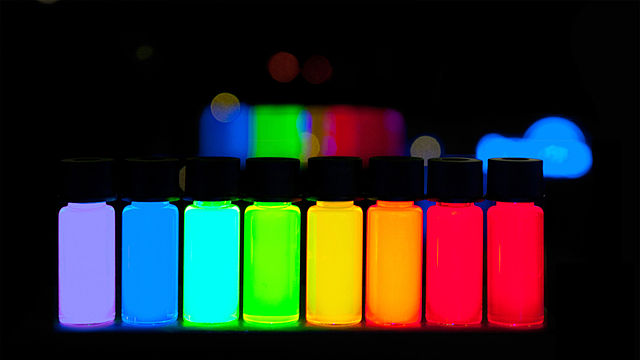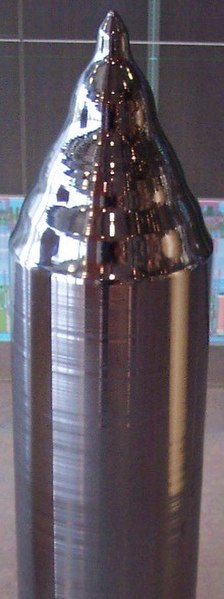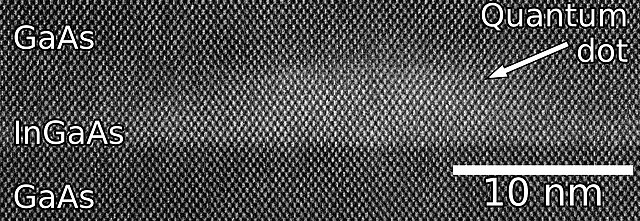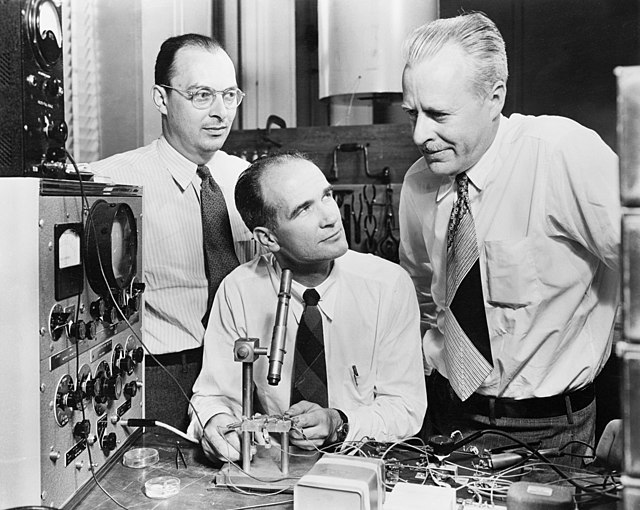Quantum dots (QDs) or semiconductor nanocrystals are semiconductor particles a few nanometres in size with optical and electronic properties that differ from those of larger particles via quantum mechanical effects. They are a central topic in nanotechnology and materials science. When a quantum dot is illuminated by UV light, an electron in the quantum dot can be excited to a state of higher energy. In the case of a semiconducting quantum dot, this process corresponds to the transition of an electron from the valence band to the conductance band. The excited electron can drop back into the valence band releasing its energy as light. This light emission (photoluminescence) is illustrated in the figure on the right. The color of that light depends on the energy difference between the conductance band and the valence band, or the transition between discrete energy states when the band structure is no longer well-defined in QDs.

Quantum dots with gradually stepping emission from violet to deep red
Cadmium sulfide quantum dots on cells
Atomic resolution scanning transmission electron microscopy image of an indium gallium arsenide (InGaAs) quantum dot buried in gallium arsenide (GaAs)
A device that produces visible light, through energy transfer from thin layers of quantum wells to crystals above the layers
A semiconductor is a material that has an electrical conductivity value falling between that of a conductor, such as copper, and an insulator, such as glass. Its resistivity generally falls as its temperature rises; metals behave in the opposite way. In many cases their conducting properties may be altered in useful ways by introducing impurities ("doping") into the crystal structure. When two differently doped regions exist in the same crystal, a semiconductor junction is created. The behavior of charge carriers, which include electrons, ions, and electron holes, at these junctions is the basis of diodes, transistors, and most modern electronics. Some examples of semiconductors are silicon, germanium, gallium arsenide, and elements near the so-called "metalloid staircase" on the periodic table. After silicon, gallium arsenide is the second-most common semiconductor and is used in laser diodes, solar cells, microwave-frequency integrated circuits, and others. Silicon is a critical element for fabricating most electronic circuits.

An ingot of monocrystalline silicon
Silicon crystals are the most common semiconducting materials used in microelectronics and photovoltaics.
Karl Ferdinand Braun developed the crystal detector, the first semiconductor device, in 1874.
John Bardeen, William Shockley and Walter Brattain developed the bipolar point-contact transistor in 1947.







